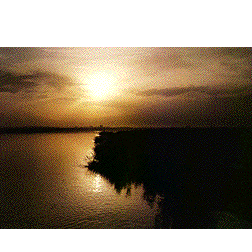|
On New Year's day, (Now-Ruz) everyone should wear new clothes, and
have had made ready the "Ha'ft Seen" that is a table
containing seven grains representing seven "Reason of Good Deeds".
Decorated table should have seven traditional items the names of
which in Iranian language (Parsi) begin with "Seen" or the letter
"S". This item should be safe good to eat, the names are pure
Parsi and are herbaceous. Aslso are not combination word, it means
are one word name. Among the most popular are: 1-Seeb (Aple), 2-Seer
(garlic), 3-Sumagh (Sumak), 4-Serkeh (Vinegar), 5-Samanoo (sweetmeat
rough made of weath), 6-Sabzi (Green vegtables), 7-Senjed (Kind of
Mountain-Ash fruit).
If one searches in the Iranian Dictionary there is no eighth item
that carries all condistions. in tradition table people addes,
Sonbol (Hyacinth), which is symbolf of Nature fragrance ang green
house, Sekkeh (Coin) that is symbold of wealth, and some other
items, as these items are not eatable, they are not herbaceous, nor
they are pure Persian names. As sekkeh and Sonbol are Arabic names.
Historically there was no reference to the book, any book, after
Islam invaded Iran, people to keep the tradition going added Koran
and used some Arabic words praying. Nowadays that this is not an
issue, people like using "Book of Kings = Shahnameh" (Epic of Iran's
history) or Hafiz poems. Here under you will see a traditional 7 Sin
table.

In addition, there should be a dish of greens, which usually consist
of freshly sprouted wheat or lentils, grown in a dish or tray,
symbol of rejuvenation of life.
In addition to these
traditional items, the table may also be decorated with candles,
milk, cheese, eggs colored and painted, cakes and sweetmeats and
goldfish in a bowl. The goldfish is believed to be a sign of
unexpected favors that will be received.
The period of
Now-Rooz festivities extends for two weeks, and its end is marked by
the celebration of the thirteenth day (Si'zdah). This is a public
holiday, and on that day families traditionally take their samovars
and rugs out into the country side and enjoy a picnic.
در نخستين روز سال (نوروز) همگان لباس نو برتن
میکنند و سفره يا ميزی از "هفت سين" که نمادی از هفت دانه و "هفت
سپندارمز" می باشد و هر سپندارمز نماد نيکی و پاکی می باشد را برگزار
میکنند. خوان هفت سين در سنت باستانی از سوی نياکان ما می بايست دارای
پنج ويژگی میبود، چون در آن زمان تازيان برکشور ايران نتاخته بودند
بنابراين نمی توانست نمادی در خوان گذاشته شود که نام تازی داشته باشد.
هر نمادی با وات (بندواژه) "سين" آغاز گردد. ريشه گياهی داشته باشد.
برای خوردن نيک و بی دردسر باشد. با نگرش به اين پنج ويژگی تنها به نام
هایی که در ميان خوراکی های ايرانی می رسيم هفت نماد زيرين میباشند:
1- سيب. 2- سير 3- سماغ (سماق تازی است) 4-سرکه 5-سمنو 6- سبزی يا سبزه
های رشد کرده از هفت دانه گوناگون 7- سنجد میبينيم که همه دارای همان
پنج ويژگی هستند و نام هشتمی هم در ميان خوراکی های ايرانی نيست.
چون ويژگی در اين بود يک يک واژه باشند بنابراين واژه های ترکيبی مثل
سيب زمينی، سبزی پولو پذيرفته نمی باشد. گرچه مردم اصرار دارند گل سنبل
در خوان نورزی باشد، ولی سنبل يک واژه تازی است و خوراکی هم نيست. سکه
و سماور هم به ترتيب واژه های تازی و روسی هستند و هيچکدام خوراکی و آن
ويژگی های لازم را ندارند.
سير نماد اهورا مزدا، نماد آن خرد انسانی است که در هر فردی وجود دارد،
سبزه نماد فرشته ارديبشت، آبهای پاک و تراوت زمين است، سيب نماد فرشته
سپندازمز، زن، باروری و پرستاری و شادابی است، سنجد نماد عشق، مهر و
فرشته خورداد و دلبستگی است، سرکه نماد امرتات (امرداد) به چم بی مرگی
و جاودانگی است، سمنو فرشته بهمن و نماد باران و طراوت و شادابی است.
Haft Sin -
Thankfulness of Creation-Parsi jpg Version
Haft Sin -
Thankfulness of Creation-Parsi Pdf Version
To read more
About Haft-Sin and Chaharshanbeh suri click here. [Parsi] |
|


